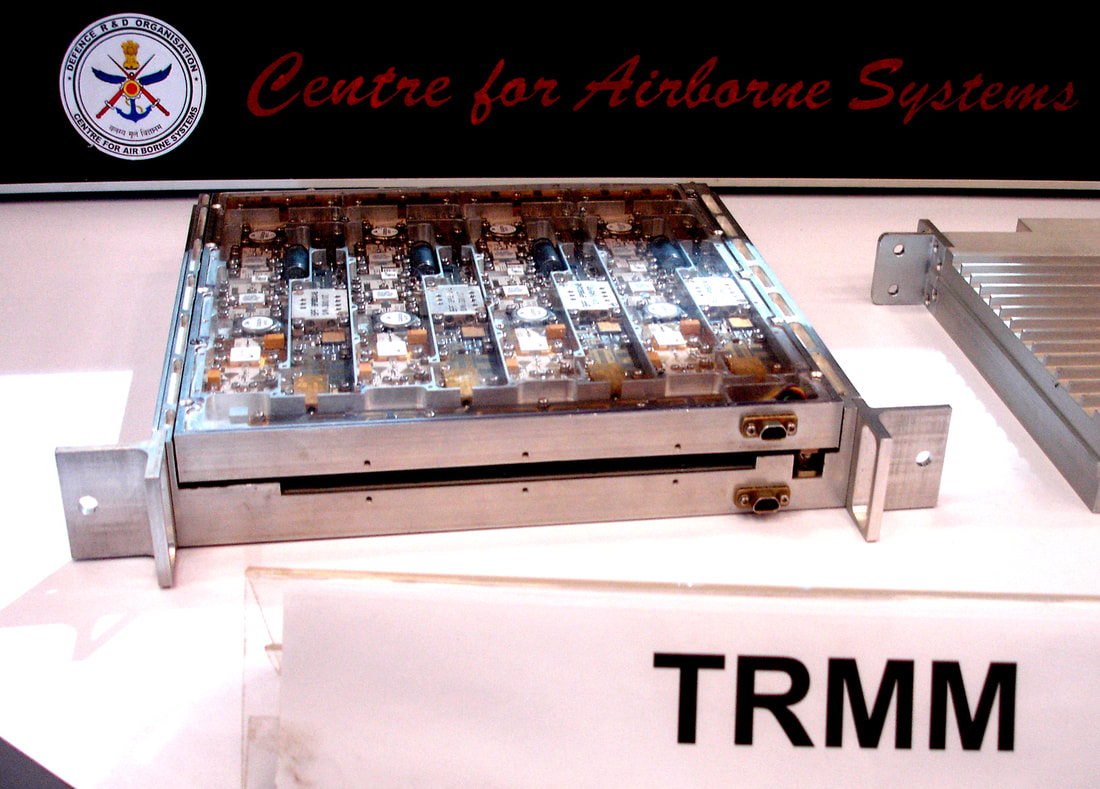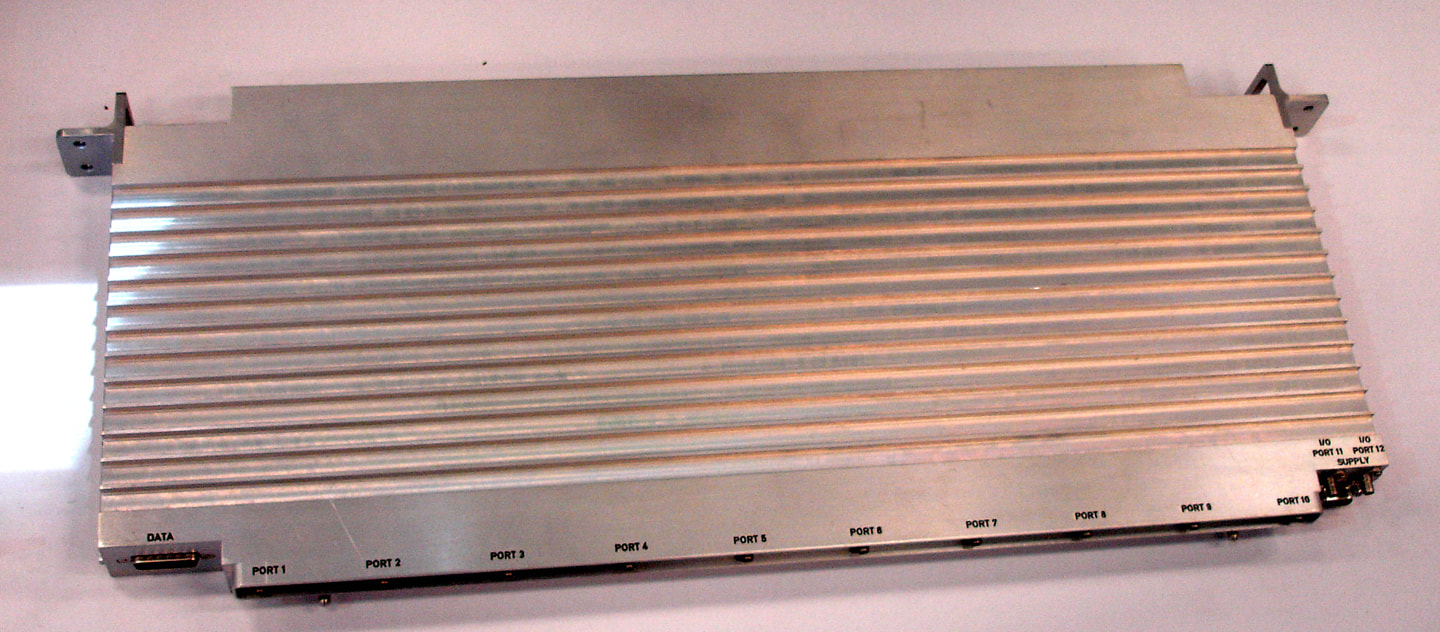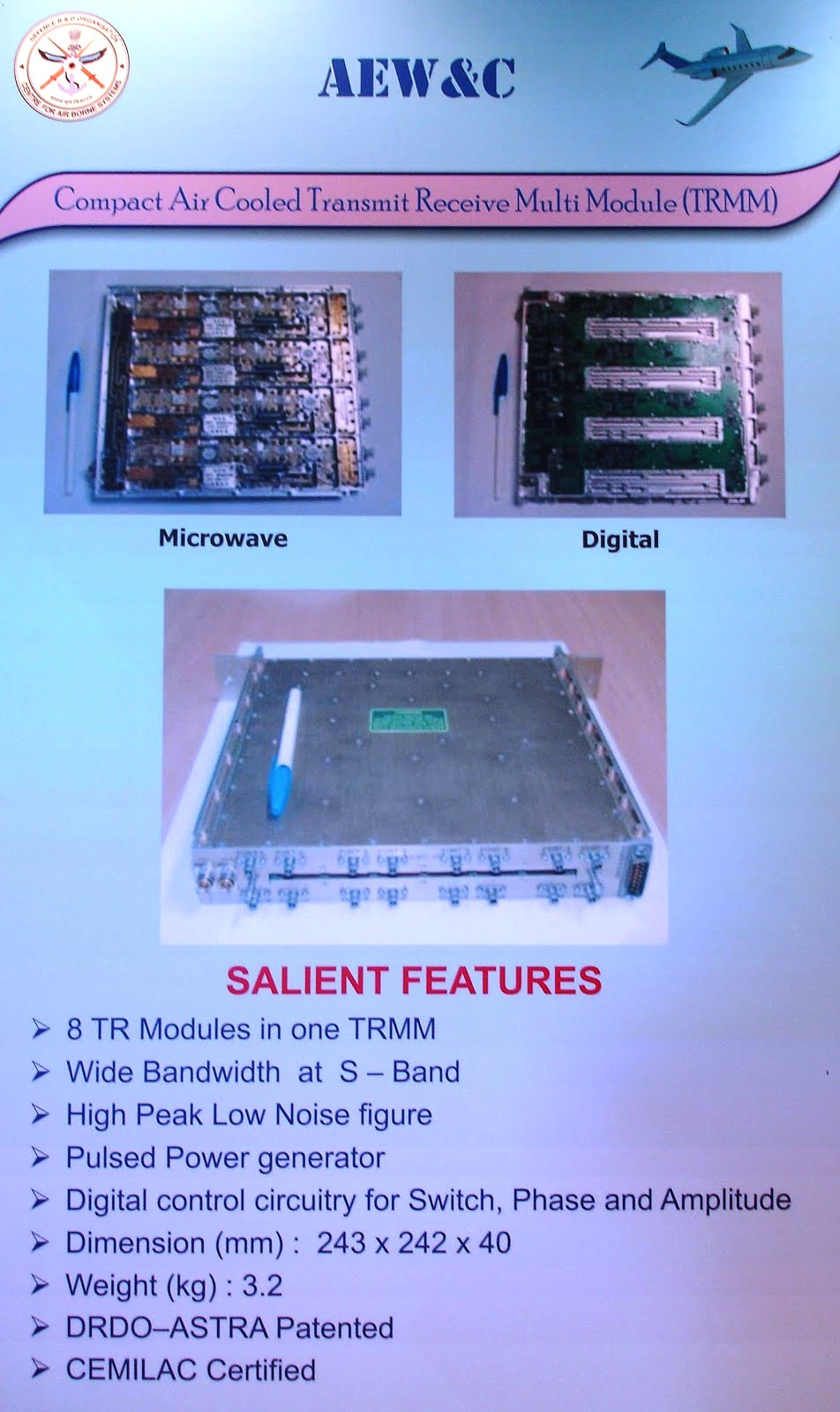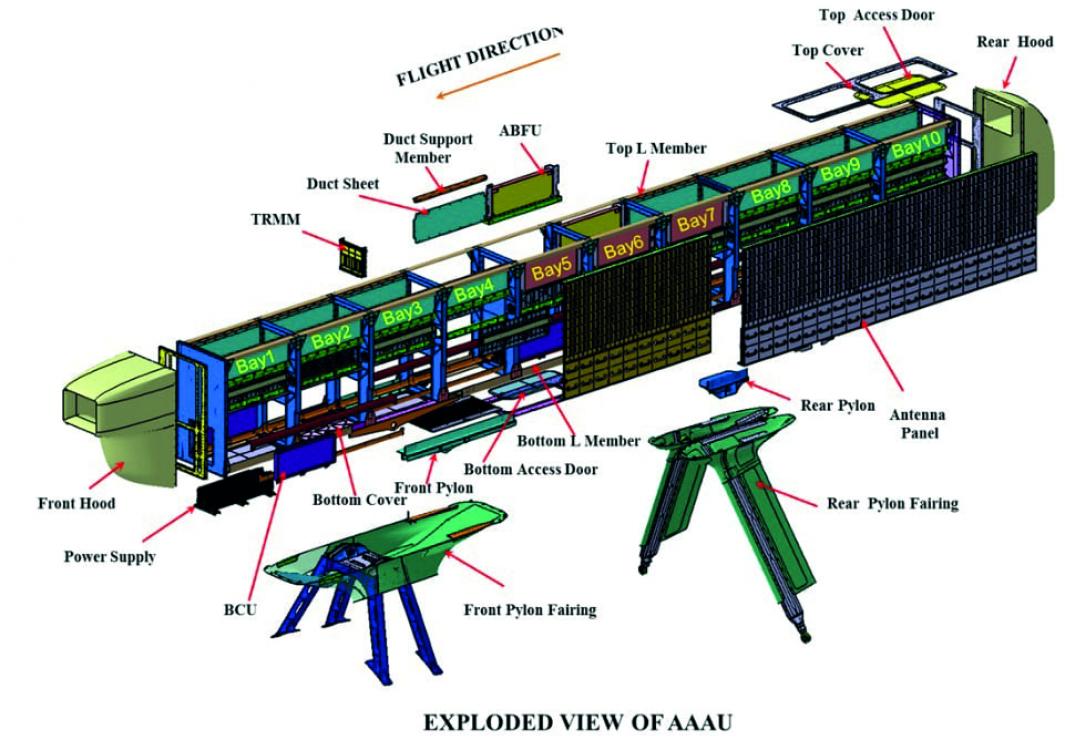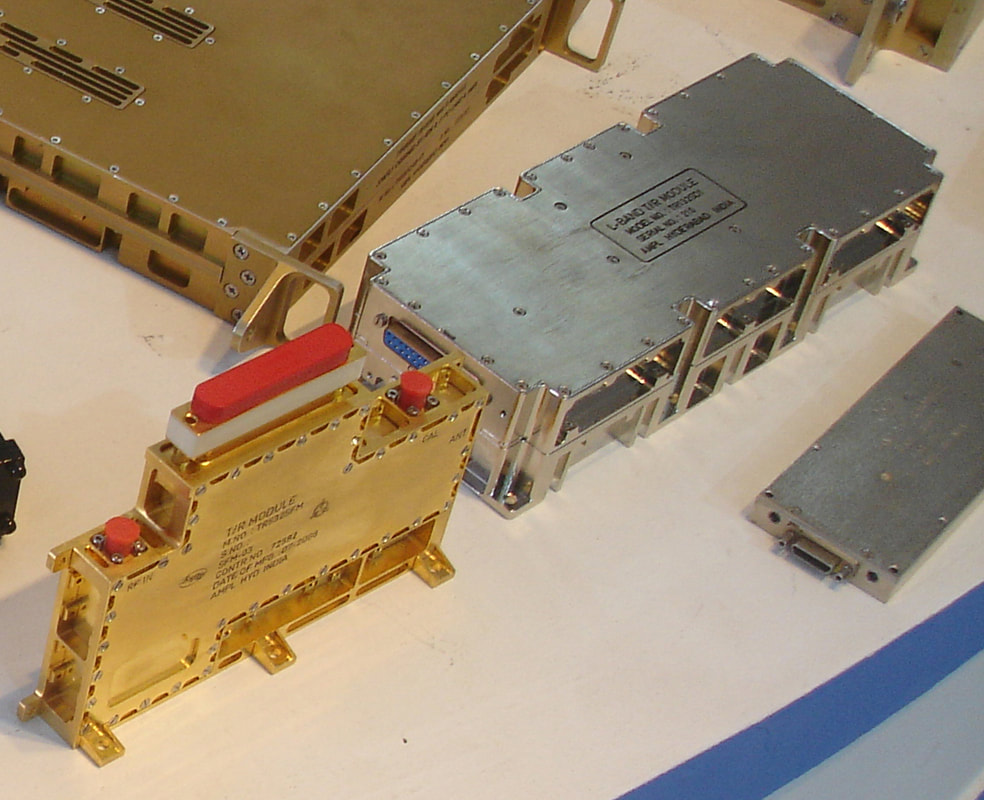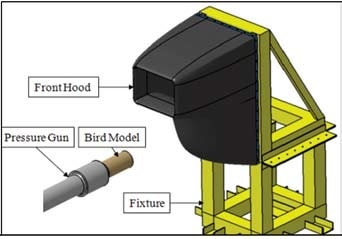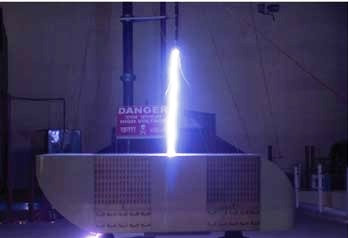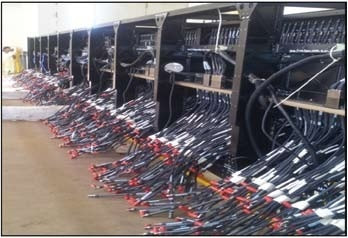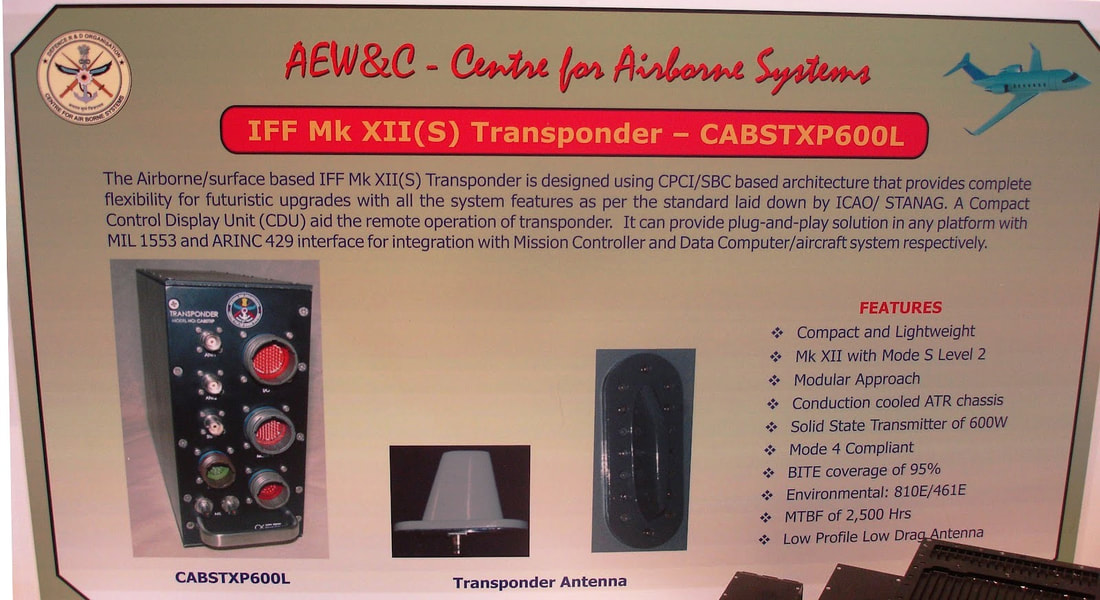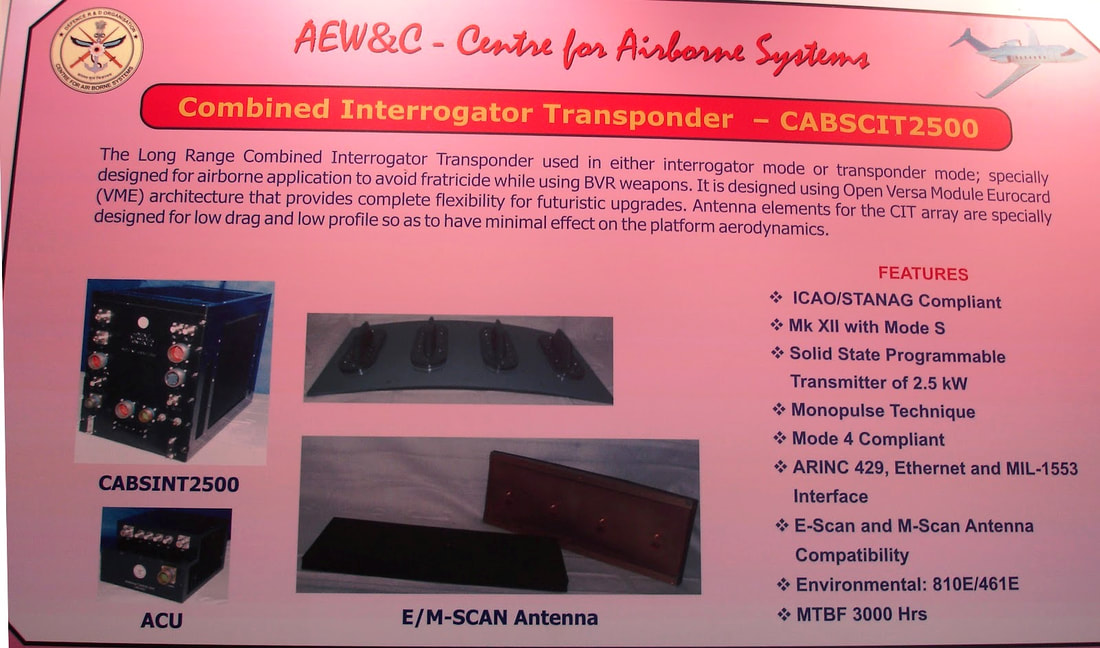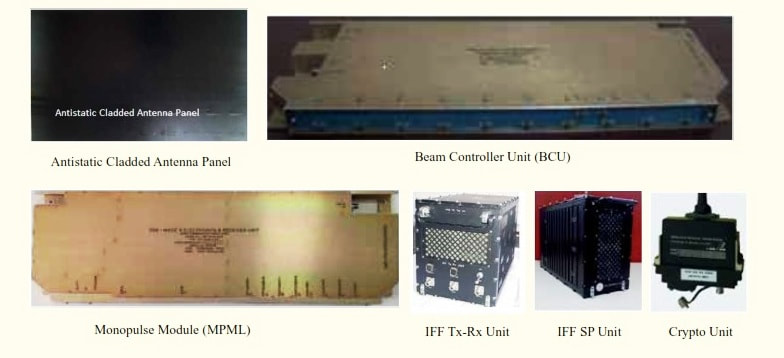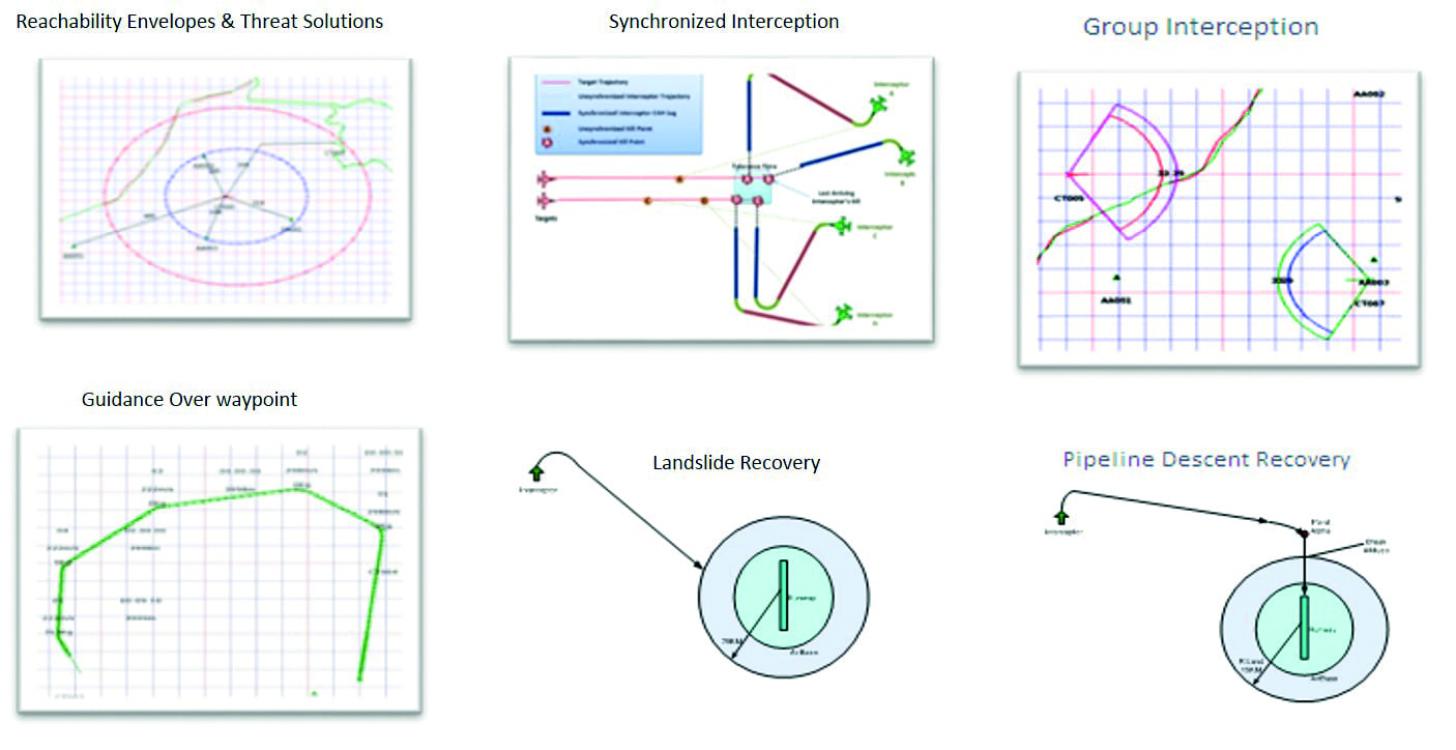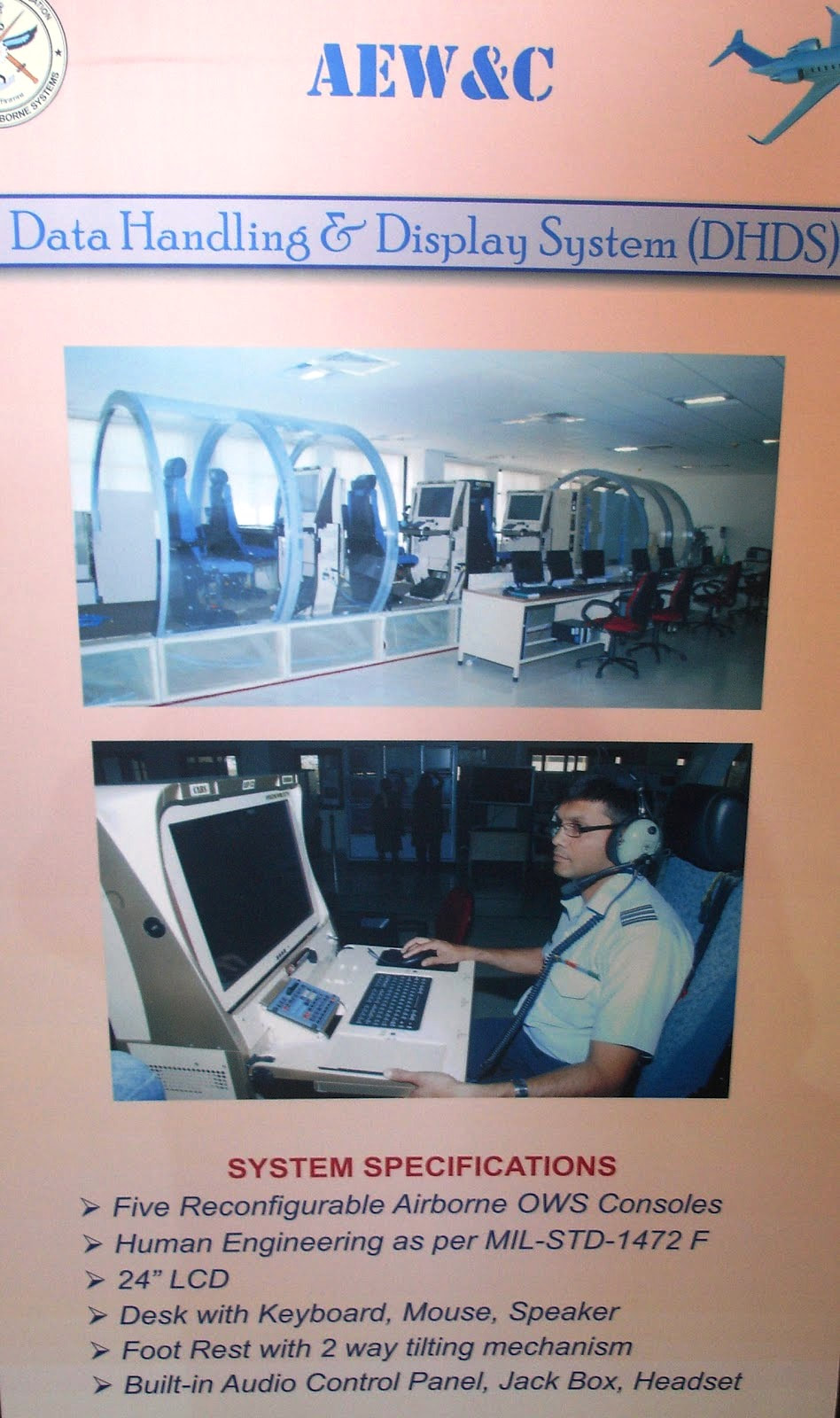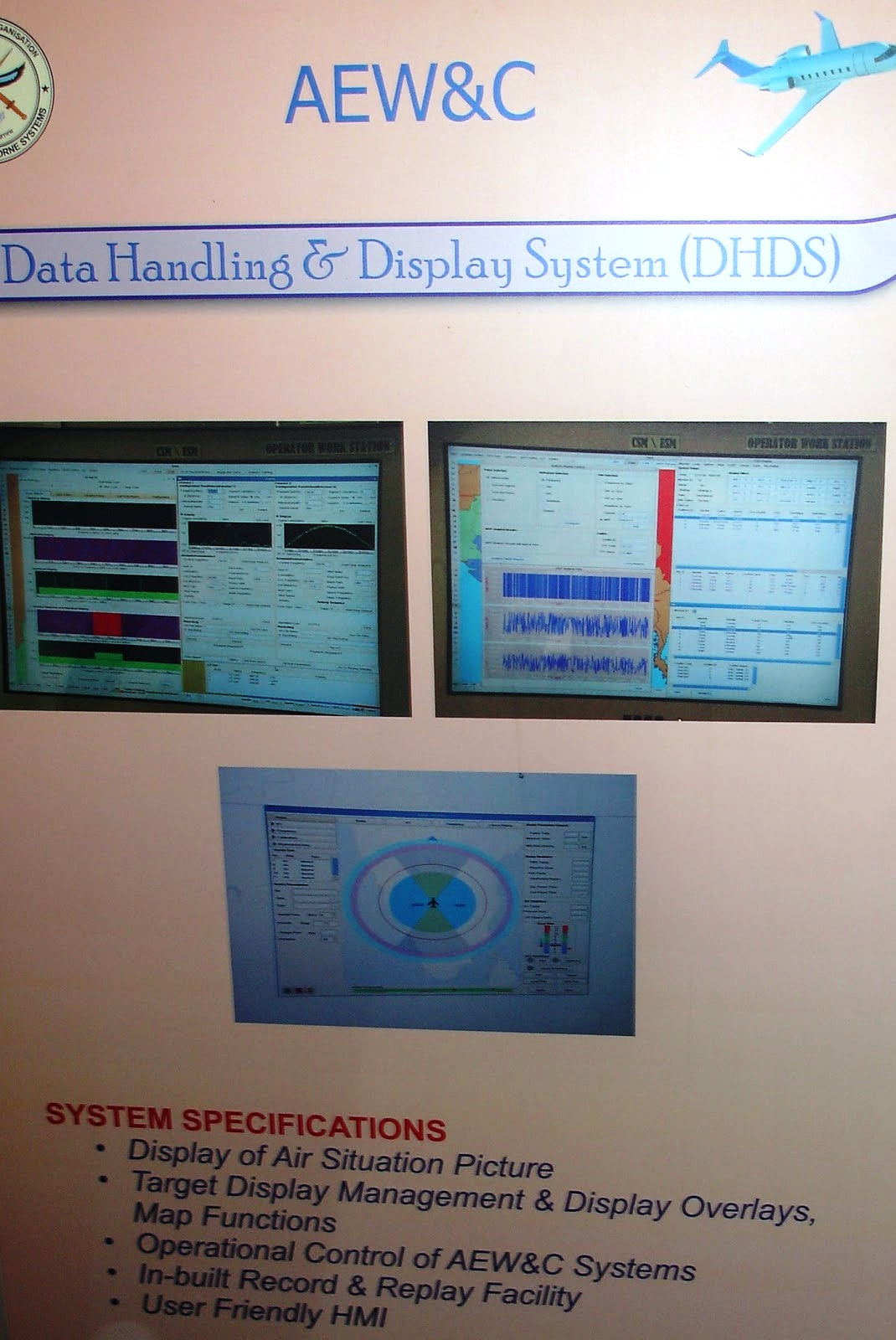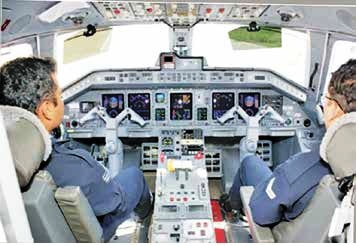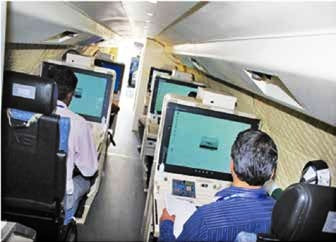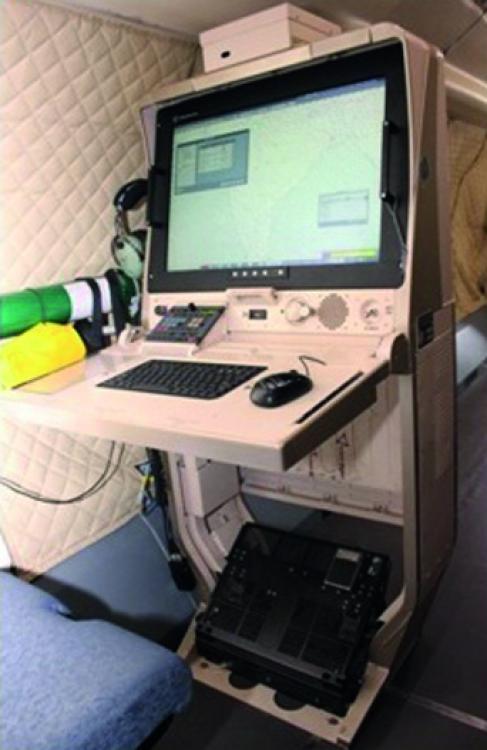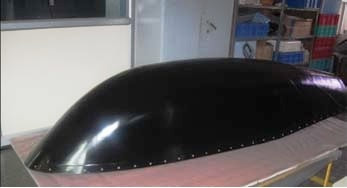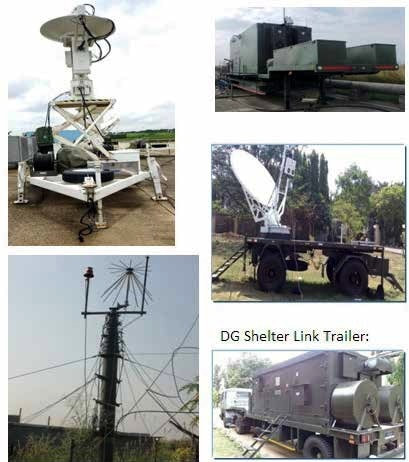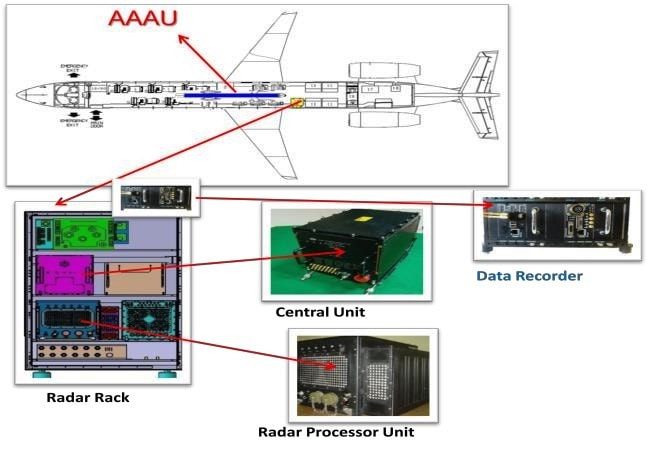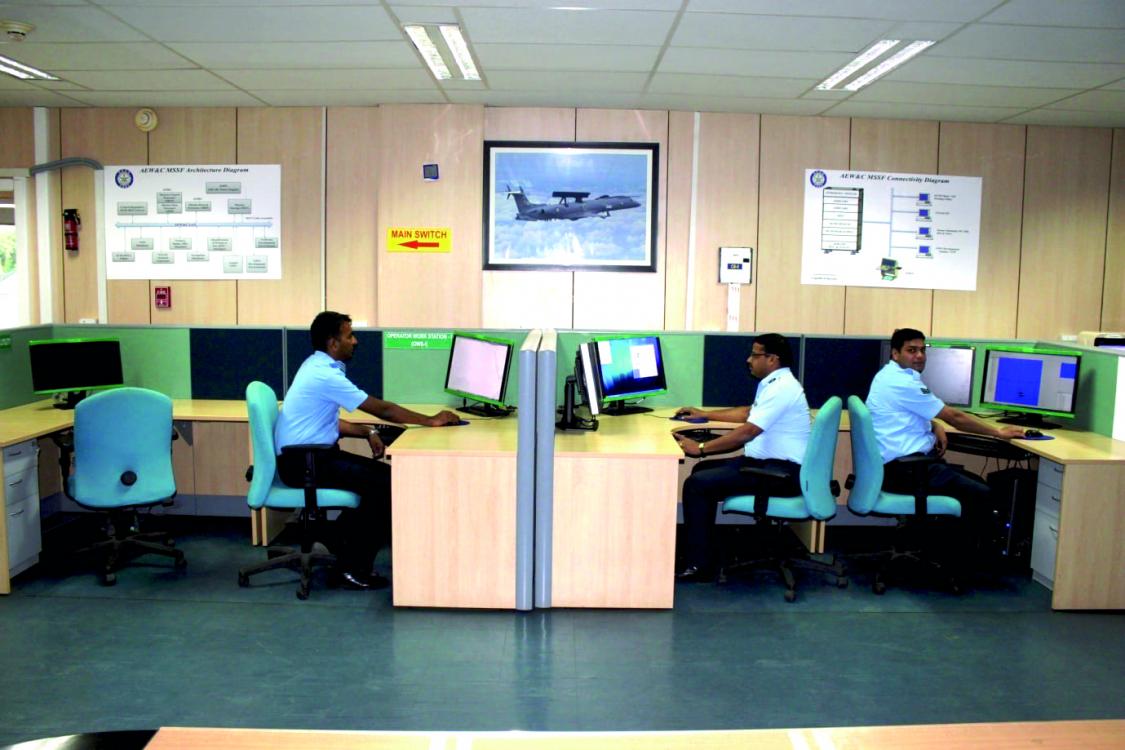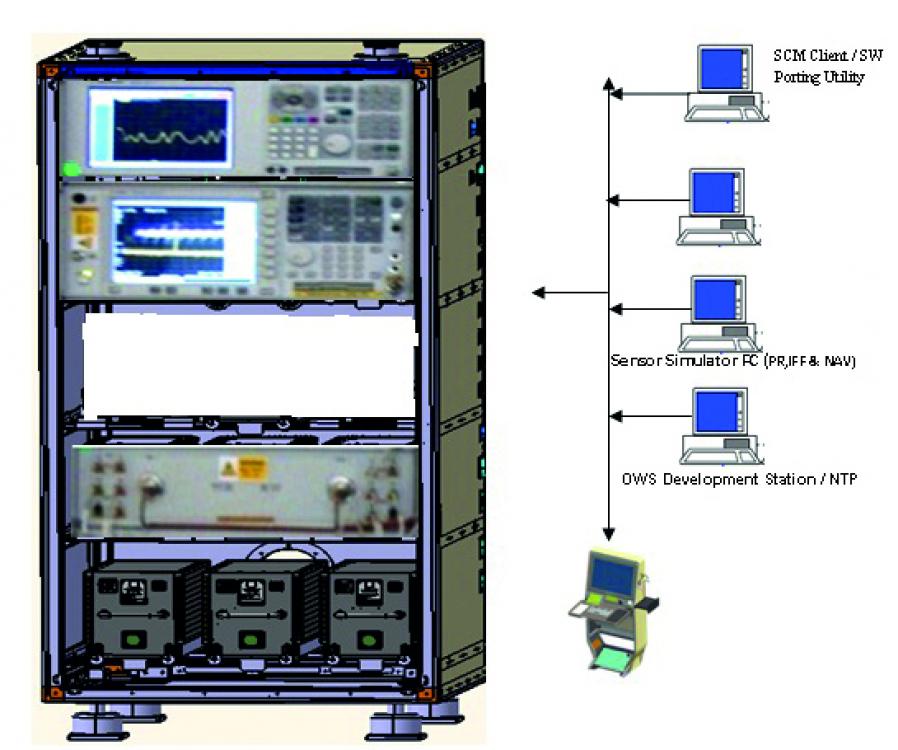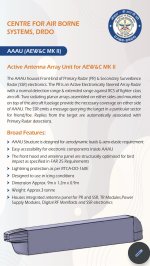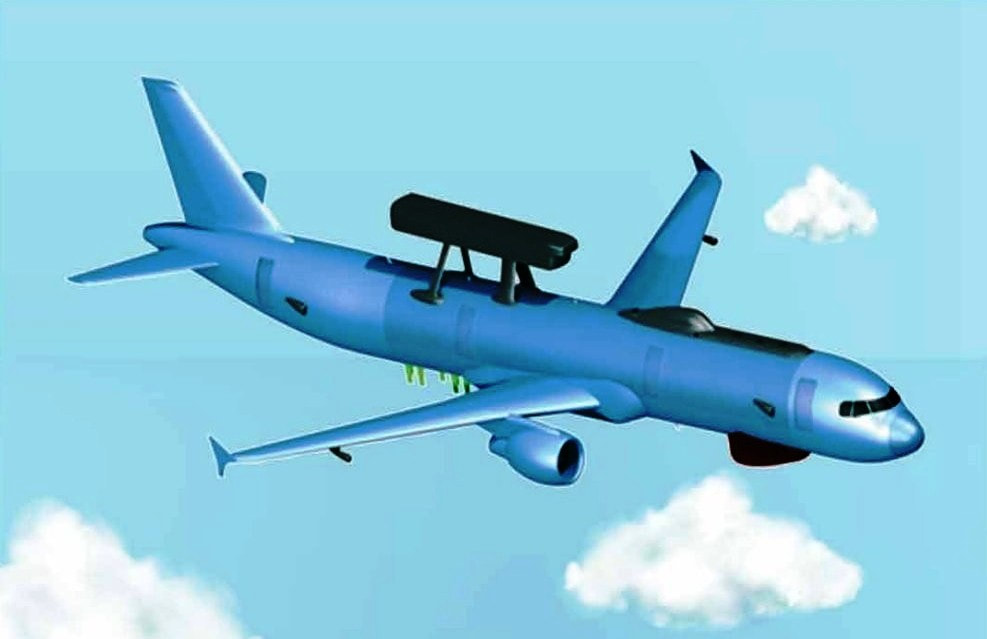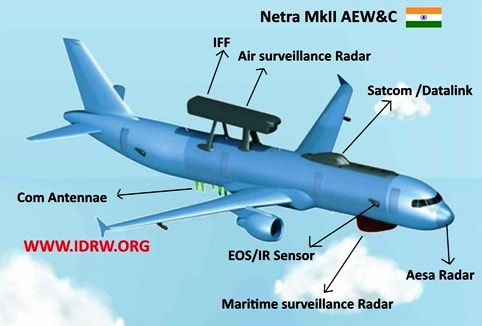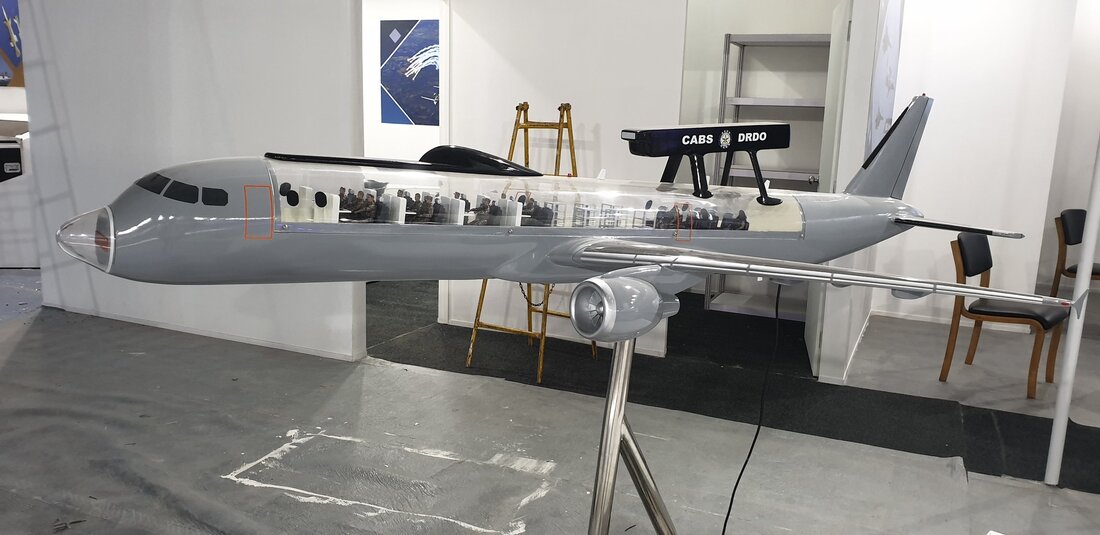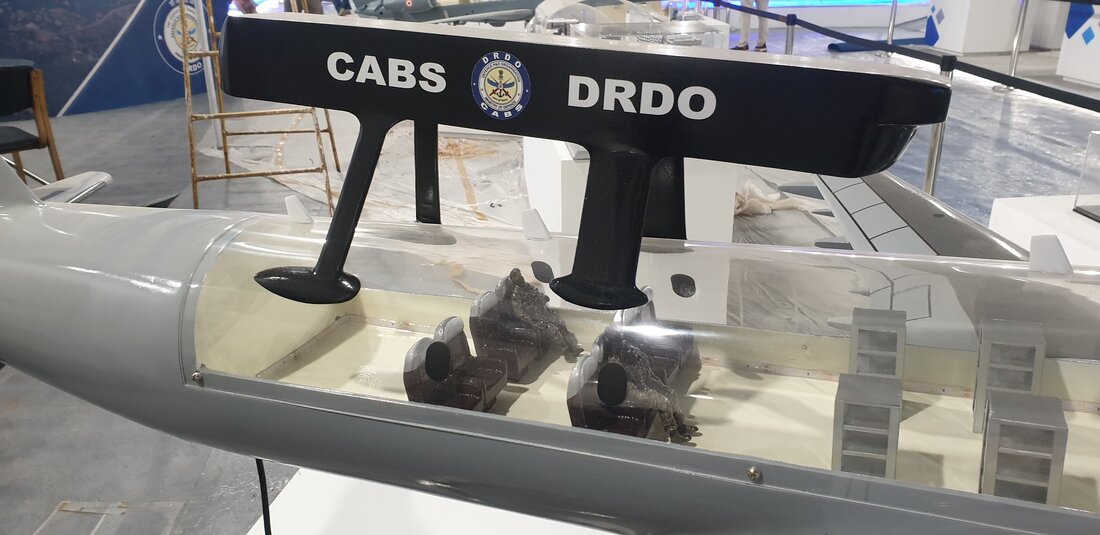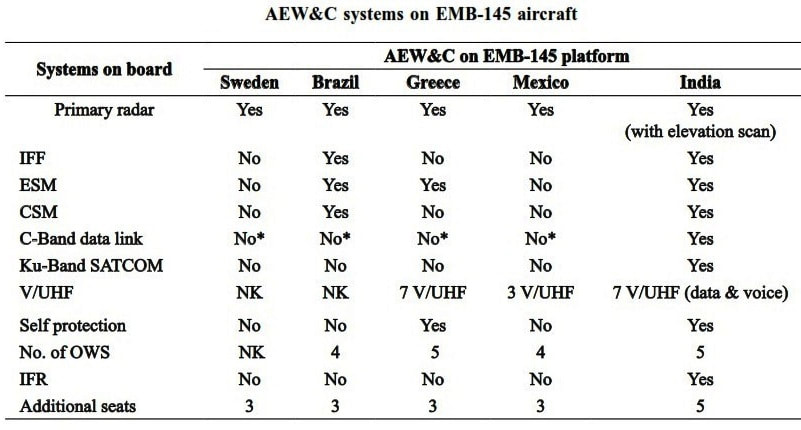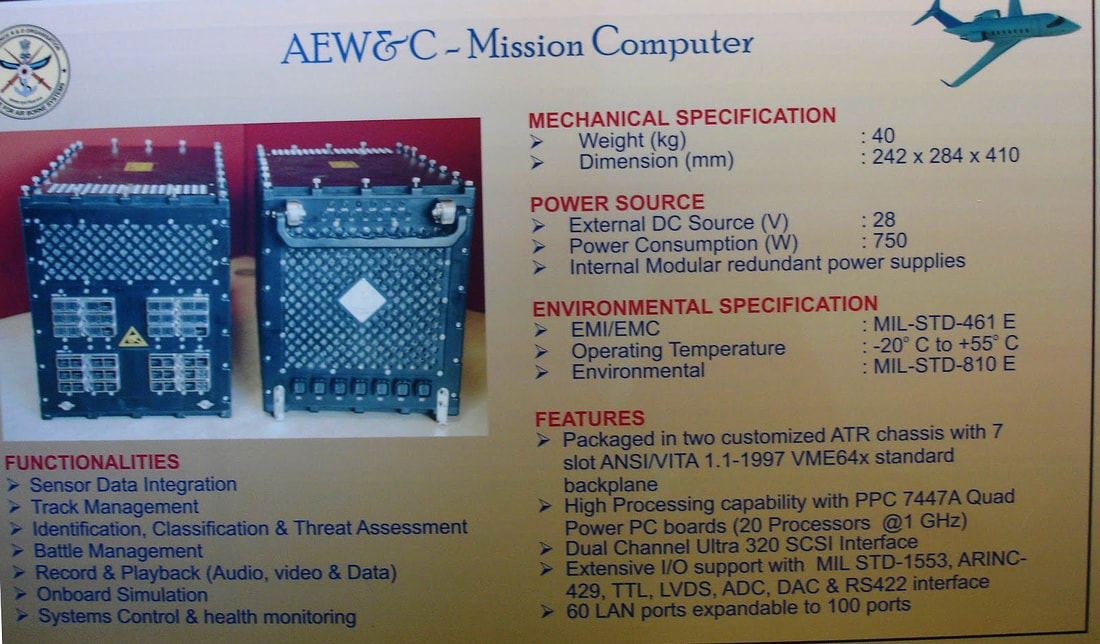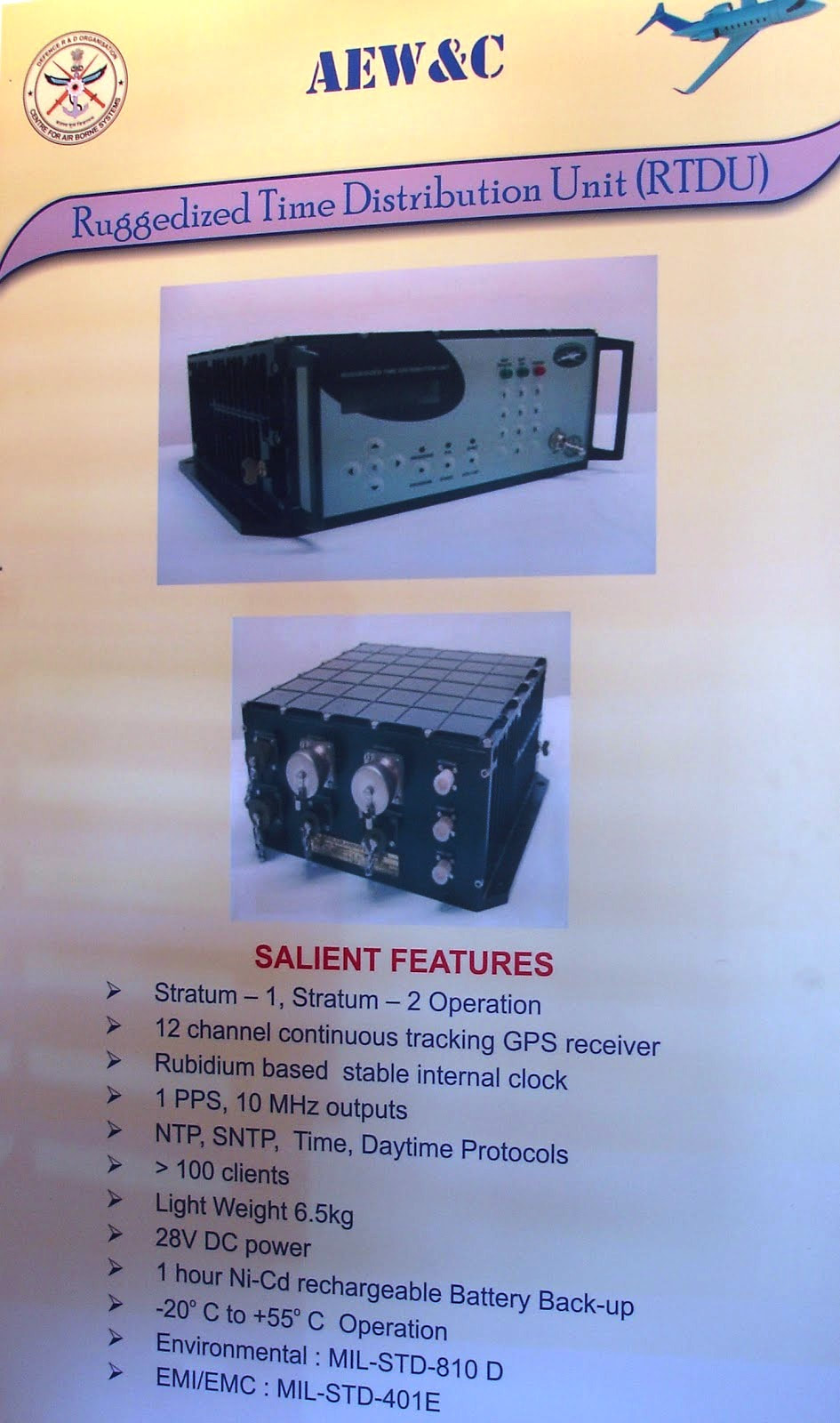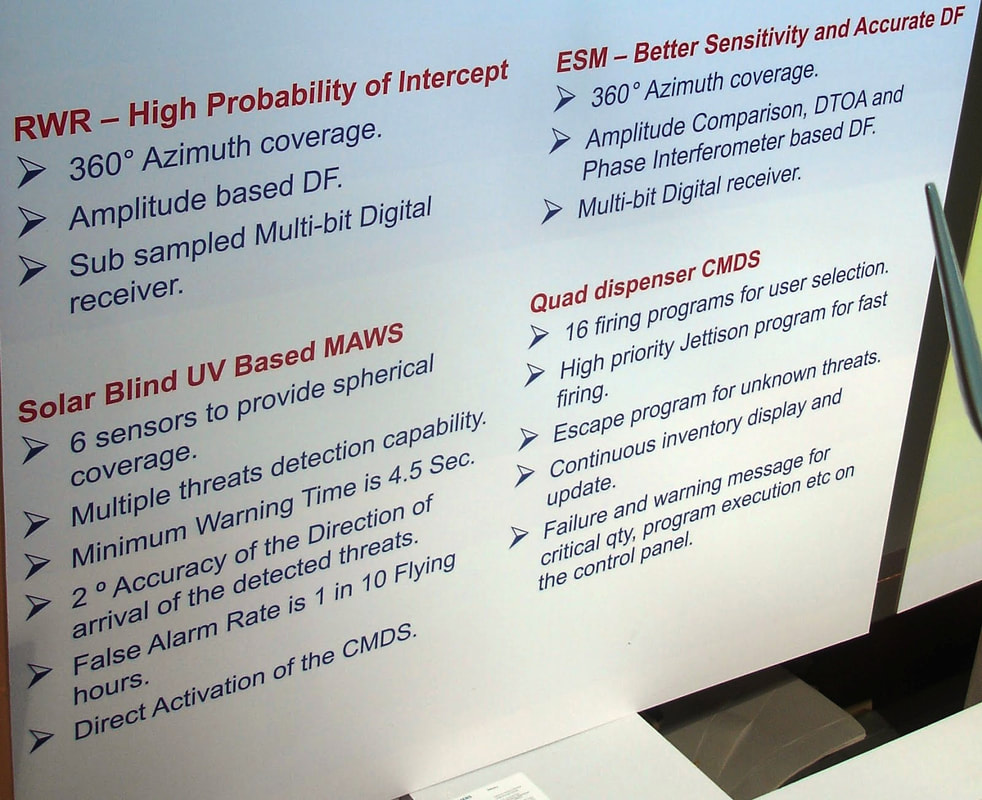Part - 1
What is an AEW&CS?
AEW&C system is a potent force multiplier, providing surveillance, tracking, identification and classification of the Airborne/Sea surface targets. The information from multiple sensors are collated, associated and fused to provide a cogent and comprehensive air situation picture on configurable consoles. Further capabilities include threat assessment and enabling the interception of the hostile targets through guidance of own interceptor.
Introduction
The development of an indigenous Airborne Early Warning and Control System (AEW&C) was taken up by DRDO & IAF in 2004.
Development of indigenous AEW&C system as a mission mode programme commenced with Centre for Airborne Systems (CABS), Bengaluru, as the nodal agency. After the sanction of the programme, IAF revised the operational requirements in tune with their emerging war fighting scenario. The revised operational requirement necessitated building of an AEW&C system on a small aircraft with all the systems and functionalities similar to that of the bigger AWACS being procured by IAF. DRDO took up the challenge and has made the system a reality.
The AEW&C aircraft is a derivative of Embraer ERJ-145 extensively modified and customized to house the indigenous mission systems developed in India. The complete integration of the mission system and its flight evaluation has been carried out in India. One of the main features of the aircraft is that it is the Embraer executive jet aircraft to have air to air refueling.
The system was envisaged to have full net centric capability through multiple LOS and Satellite Communication Data links, on-board Mission Computer, which enables the operator to carry out the information fusion, mission control, and reconfigurable operator consoles for the operator to interact with the system and exploit the system capabilities in tune with the operational environment.

The AEW&C system is a system of systems having primary radar (PR), secondary surveillance radar (SSR), electronic support measure, communication support measure (CSM), ‘C’- Band Data Link (CBDL), ‘Ku’- Band SATCOM data link (KBDL), V/UHF communication link working in the microwave region.
The Indian AEW&C system is versatile in choice of the sub-systems and its capabilities.
Equipment's
All the above systems are electrically and functionally integrated through a high speed LAN and complete suite of tactical software fully developed in house. This software provides functionalities such as multi sensor tracking and data fusion, multi target tracking, identification and classification, system control and monitoring interception and battle management functions, all of which are developed in house. A comprehensive Human Machine Interface again developed in house, projects the real-time air situation picture, into five reconfigurable consoles, in a manner required by the individual operators. In addition to the airborne complement, five major ground systems supporting all aspects of planning, training, maintenance, and integration with IAF Command and Control Centre also have been developed fully indigenously.
These are:
All of these are backed by a regular post development support project taken by CABS to enable operational and maintenance support to the IAF for a period of three years.
The AEW&C system has undergone extensive flight evaluation flying close to 1500 hrs (700+ sorties). These include flying at Bengaluru, evaluation campaigns at various IAF bases such as Jamnagar, Bhatinda, Jodhpur, Gwalior, Agra, Chabua to state a few. Evaluation of the system also includes evaluation through conduct of Large Fleet Engagement exercise (more than 25 of them) to evaluate the complete performance capabilities of the AEW&C command, control, battle management, etc. The AEW&C system is being integrated with the IAF’s Command and Control System.
Specifications
Range: 250-300km (475km in super extended mode)
Aircraft range: 2700km
Service ceiling: 37000ft
Maximum speed: Mach 0.8
Total TR modules: 160 TRMM with 8 TR modules in each TRMM (Total 1280 TR modules)
AAAU Dimensions: 8.2m X 0.9m X 0.5m

Sensor arrangement
In AEW&C, the real estate available on board the aircraft is limited and hence antennae are to be kept in close proximity to each other. On the exterior of the AEW&C aircraft, there are 89 antennae and sensors located in a cramped condition. In addition, aircraft body being metallic, the individual antenna radiation pattern gets distorted due to ‘body effect’. Hence, prior knowledge of the individual antenna radiation pattern alone cannot help while selecting suitable locations on the exterior of the aircraft for various antennae. Moreover, aircraft safety being of the highest priority, the ideal location requirement from antenna radiation pattern point of view has to take a back seat. The first step toward location identification is to predict the antenna radiation pattern with ‘body effects’. For this, one has to resort to any of the computational electro-magnetic methods. Commercial tools such as E-Mind have been used for this. This exercise is recitative and time consuming. Depending upon the number of locations tried for each antenna, one generates voluminous data.
In general the antenna location process went through the following steps:
The location of the SATCOM radome adjusted forward to allow sufficient air for the active antenna array unit located in the rear under all ‘angle-of-attack’ conditions. Similarly, the AAAU itself was moved forward to avoid damage from a possible broken engine blade leading to a flight hazard. Additional fins had to be added to stabilize the aircraft under ‘side-slip’ conditions as there was a blockage of air to the control surface.

Diagram of working of AEW&C system
Active electronically scanned array radar
Active Antenna Array Unit (AAAU) is a major as well as critical component of the AEW&C system and has been indigenously developed.
AAAU is an active electronically scanned array (AESA)-based radar having more than 1,000 elements producing several tens of kilo watts of power.
The AAAU is mounted on dorsal side of the aircraft fuselage using four pylons. Being an external structure of an aircraft with the dimensions of 8.2m X 0.9m X 0.5m, it qualified stringent airworthiness requirements.
AAAU structure is designed for aerodynamic loads, inertia loads and aero-elastic requirements. The mechanical design of AAAU is designed considering easy accessibility for various electronic components (LRUs) inside the AAAU. The fool proof design of AAAU caters for antenna structure, thermal, microwave electronics & digital electronics. Wind tunnel tests and CFD studies were conducted for the AAAU to optimize the aerodynamic shape of front and rear hood and to estimate the internal and external aerodynamic loads. Structural tests such as Modal Analysis Test (MAT), Static Strength Test (SST) and Ground Vibration Test (GVT) were conducted and validated with Finite Element Analysis.
Internal design is made to optimize the cable routing, for accommodation of front end electronics of primary & secondary surveillance radars and cooling of them.
This design, using ram air for cooling the electronics inside the AAAU, reduces the burden on the cooling system virtually to one third and consequently the power that is required for cooling is also reduced. The front hood and antenna panels were structurally optimized, tested and certified for bird impact requirements specified in Federal Aviation Regulation (FAR– 25).
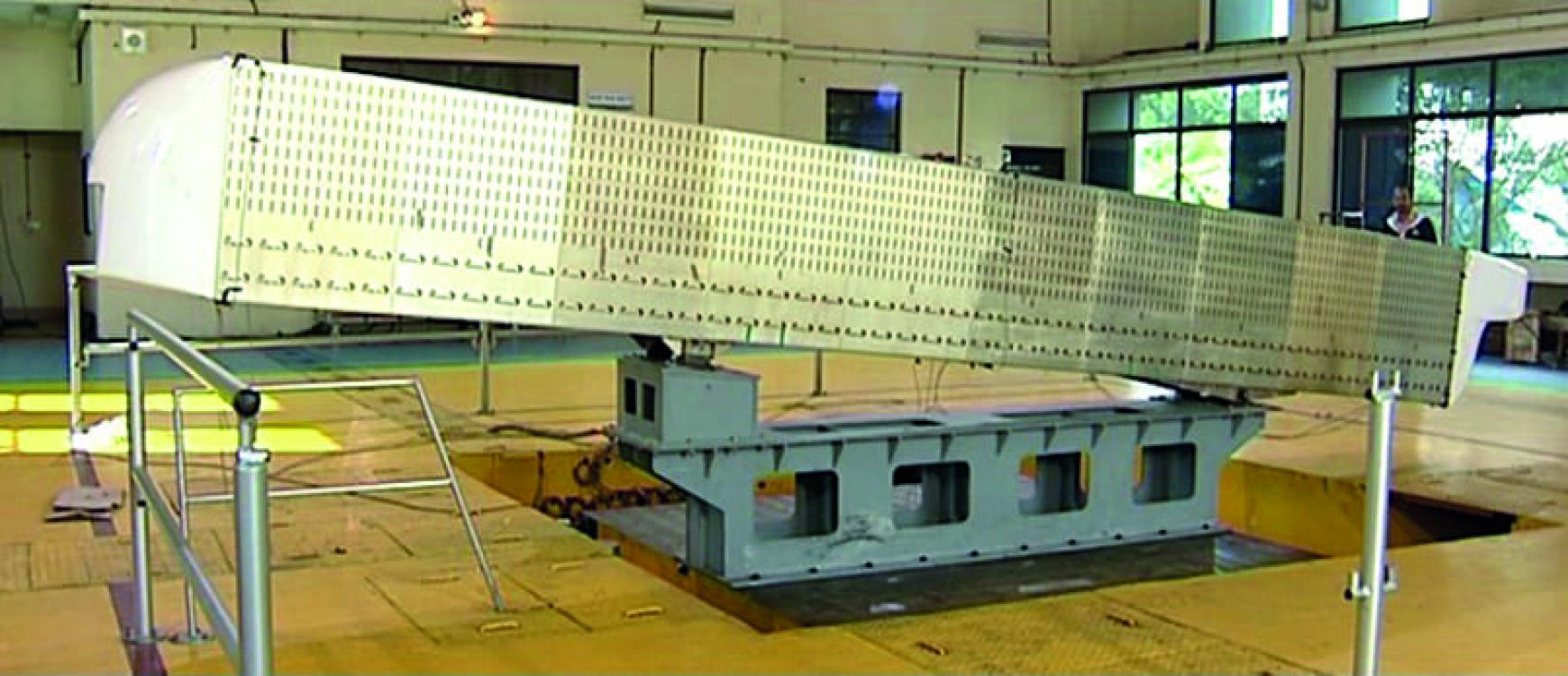
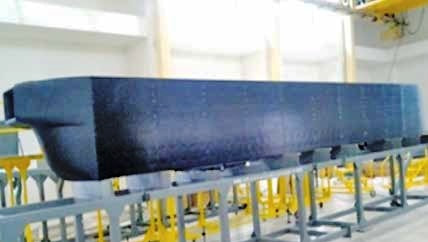
AEW&C Active Electronic Array Antenna
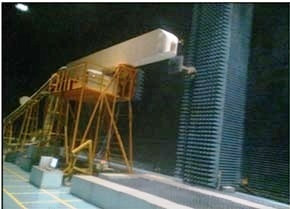
AAAU in PNFM facility.
The radar offers multifunction, multi-mode capability with highly agile beam steering and electronic beam stabilization by the array.
Radiating interface, the major subsystem of the PR Active Electronically Scanned Array (AESA), is first of its kind. To obtain higher sensitivity, the AAAU is designed with high power transmit capability and also achieved ultra-low side lobe level in the receive mode.
The AAAU array has been developed with amalgamation of analog and digital electronics, microwave & electrical technologies. Its sophisticated electrical power distribution system comprises multiple safety measures. The performance of the array is maintained by in-situ calibration system.
What is an AEW&CS?
AEW&C system is a potent force multiplier, providing surveillance, tracking, identification and classification of the Airborne/Sea surface targets. The information from multiple sensors are collated, associated and fused to provide a cogent and comprehensive air situation picture on configurable consoles. Further capabilities include threat assessment and enabling the interception of the hostile targets through guidance of own interceptor.
Introduction
The development of an indigenous Airborne Early Warning and Control System (AEW&C) was taken up by DRDO & IAF in 2004.
Development of indigenous AEW&C system as a mission mode programme commenced with Centre for Airborne Systems (CABS), Bengaluru, as the nodal agency. After the sanction of the programme, IAF revised the operational requirements in tune with their emerging war fighting scenario. The revised operational requirement necessitated building of an AEW&C system on a small aircraft with all the systems and functionalities similar to that of the bigger AWACS being procured by IAF. DRDO took up the challenge and has made the system a reality.
The AEW&C aircraft is a derivative of Embraer ERJ-145 extensively modified and customized to house the indigenous mission systems developed in India. The complete integration of the mission system and its flight evaluation has been carried out in India. One of the main features of the aircraft is that it is the Embraer executive jet aircraft to have air to air refueling.
The system was envisaged to have full net centric capability through multiple LOS and Satellite Communication Data links, on-board Mission Computer, which enables the operator to carry out the information fusion, mission control, and reconfigurable operator consoles for the operator to interact with the system and exploit the system capabilities in tune with the operational environment.

The AEW&C system is a system of systems having primary radar (PR), secondary surveillance radar (SSR), electronic support measure, communication support measure (CSM), ‘C’- Band Data Link (CBDL), ‘Ku’- Band SATCOM data link (KBDL), V/UHF communication link working in the microwave region.
The Indian AEW&C system is versatile in choice of the sub-systems and its capabilities.
Equipment's
- Active Electronically Scanned Array for Primary Radar (PR)
- Fully indigenous, electronically scanned antenna based MK-XII(S) and mode 4 capable Identification Friend or Foe (IFF) System.
- Electronic Support Measure (ESM) and Communication Support Measure (CSM) for detection of hostile air defenses
- Satcom & line of sight Voice and Data Communication System
- Self-protection Suite (SPS) consisting of UV-based Missile Approach Warning Sensor (MAWS) and Radar Warning Receiver (RWR).
- Mission Communication System for Air-to-Air, Air-to-Ground V/UHF voice
- Satellite-based Non Line-of-Sight Communication and Data Link.
- C band Line-of-Sight Communication and Data Link.
- V/UHF voice only communications system
- Five Operator Workstation and Five rest crew seats, Reconfigurable Operator Work Stations.
- Extendable Endurance with In-Flight refueling (IFR)
- Dedicated APU's for Mission Avionics
- Fuel Efficient Regional Jet aircraft platform
- Tactical Battle Management Software
- Mission Computer
All the above systems are electrically and functionally integrated through a high speed LAN and complete suite of tactical software fully developed in house. This software provides functionalities such as multi sensor tracking and data fusion, multi target tracking, identification and classification, system control and monitoring interception and battle management functions, all of which are developed in house. A comprehensive Human Machine Interface again developed in house, projects the real-time air situation picture, into five reconfigurable consoles, in a manner required by the individual operators. In addition to the airborne complement, five major ground systems supporting all aspects of planning, training, maintenance, and integration with IAF Command and Control Centre also have been developed fully indigenously.
These are:
- Mission Planning and Analysis Station (MIPAS), which enables multiple operators to plan their mission on AEW&C simultaneously. Additionally a laptop-based mobile MIPAS also have been configured and provided.
- Ground Exploitation Station, receives the information from the aircraft and communicates the information to the IAF Command and Control Centre.
- Operator Training Station, which enables up to 8 operators to be trained simultaneously on all aspects of operation of the AEW&C.
- Automated Test Equipment, which enables first level of maintenance through automated test process.
- Mission Software Support Facility, a software repository to maintain the software versions through life of AEW&C.
All of these are backed by a regular post development support project taken by CABS to enable operational and maintenance support to the IAF for a period of three years.
The AEW&C system has undergone extensive flight evaluation flying close to 1500 hrs (700+ sorties). These include flying at Bengaluru, evaluation campaigns at various IAF bases such as Jamnagar, Bhatinda, Jodhpur, Gwalior, Agra, Chabua to state a few. Evaluation of the system also includes evaluation through conduct of Large Fleet Engagement exercise (more than 25 of them) to evaluate the complete performance capabilities of the AEW&C command, control, battle management, etc. The AEW&C system is being integrated with the IAF’s Command and Control System.
Specifications
Range: 250-300km (475km in super extended mode)
Aircraft range: 2700km
Service ceiling: 37000ft
Maximum speed: Mach 0.8
Total TR modules: 160 TRMM with 8 TR modules in each TRMM (Total 1280 TR modules)
AAAU Dimensions: 8.2m X 0.9m X 0.5m

Netra Long Range Tracking Ability
Sensor arrangement
In AEW&C, the real estate available on board the aircraft is limited and hence antennae are to be kept in close proximity to each other. On the exterior of the AEW&C aircraft, there are 89 antennae and sensors located in a cramped condition. In addition, aircraft body being metallic, the individual antenna radiation pattern gets distorted due to ‘body effect’. Hence, prior knowledge of the individual antenna radiation pattern alone cannot help while selecting suitable locations on the exterior of the aircraft for various antennae. Moreover, aircraft safety being of the highest priority, the ideal location requirement from antenna radiation pattern point of view has to take a back seat. The first step toward location identification is to predict the antenna radiation pattern with ‘body effects’. For this, one has to resort to any of the computational electro-magnetic methods. Commercial tools such as E-Mind have been used for this. This exercise is recitative and time consuming. Depending upon the number of locations tried for each antenna, one generates voluminous data.
In general the antenna location process went through the following steps:
- No location on the control surfaces.
- No location that affects air flow over the control surfaces.
- No location that blocks the air in-take.
- No location that leads debris into the engine during bird strike
- No location that interferes with aircraft controls.
- No location that does not have structure to support the antenna
- No location that burns the other mission system front- end
- Preferably locations not affecting the cooling for other mission systems
- Preferably locations not affecting field of view of other mission systems
- Preferably locations not affecting the performance of other systems.
The location of the SATCOM radome adjusted forward to allow sufficient air for the active antenna array unit located in the rear under all ‘angle-of-attack’ conditions. Similarly, the AAAU itself was moved forward to avoid damage from a possible broken engine blade leading to a flight hazard. Additional fins had to be added to stabilize the aircraft under ‘side-slip’ conditions as there was a blockage of air to the control surface.

Diagram of working of AEW&C system
Active electronically scanned array radar
Active Antenna Array Unit (AAAU) is a major as well as critical component of the AEW&C system and has been indigenously developed.
AAAU is an active electronically scanned array (AESA)-based radar having more than 1,000 elements producing several tens of kilo watts of power.
The AAAU is mounted on dorsal side of the aircraft fuselage using four pylons. Being an external structure of an aircraft with the dimensions of 8.2m X 0.9m X 0.5m, it qualified stringent airworthiness requirements.
AAAU structure is designed for aerodynamic loads, inertia loads and aero-elastic requirements. The mechanical design of AAAU is designed considering easy accessibility for various electronic components (LRUs) inside the AAAU. The fool proof design of AAAU caters for antenna structure, thermal, microwave electronics & digital electronics. Wind tunnel tests and CFD studies were conducted for the AAAU to optimize the aerodynamic shape of front and rear hood and to estimate the internal and external aerodynamic loads. Structural tests such as Modal Analysis Test (MAT), Static Strength Test (SST) and Ground Vibration Test (GVT) were conducted and validated with Finite Element Analysis.
Internal design is made to optimize the cable routing, for accommodation of front end electronics of primary & secondary surveillance radars and cooling of them.
This design, using ram air for cooling the electronics inside the AAAU, reduces the burden on the cooling system virtually to one third and consequently the power that is required for cooling is also reduced. The front hood and antenna panels were structurally optimized, tested and certified for bird impact requirements specified in Federal Aviation Regulation (FAR– 25).


AEW&C Active Electronic Array Antenna

AAAU in PNFM facility.
The radar offers multifunction, multi-mode capability with highly agile beam steering and electronic beam stabilization by the array.
Radiating interface, the major subsystem of the PR Active Electronically Scanned Array (AESA), is first of its kind. To obtain higher sensitivity, the AAAU is designed with high power transmit capability and also achieved ultra-low side lobe level in the receive mode.
The AAAU array has been developed with amalgamation of analog and digital electronics, microwave & electrical technologies. Its sophisticated electrical power distribution system comprises multiple safety measures. The performance of the array is maintained by in-situ calibration system.
Last edited:


